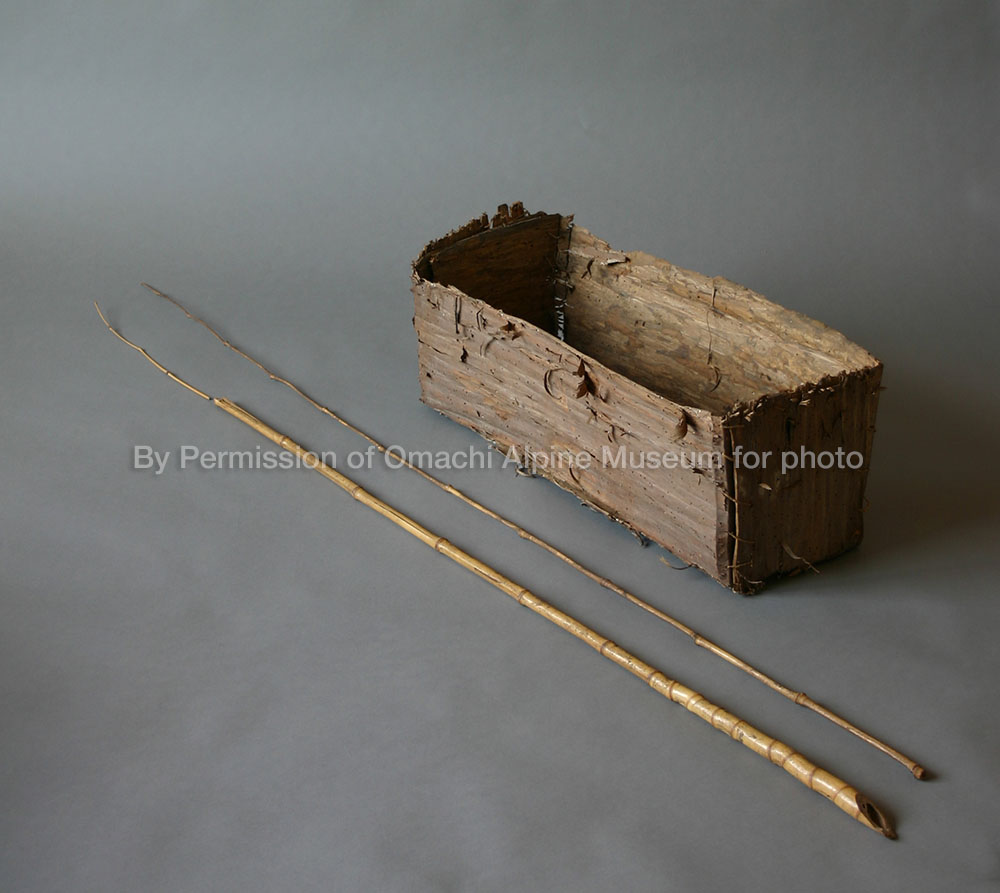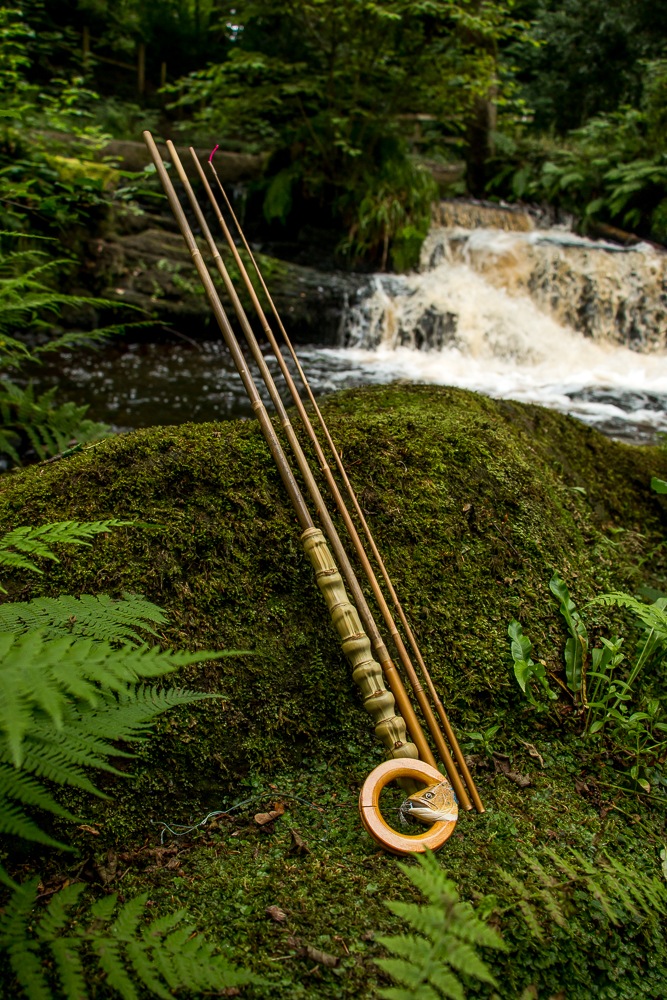If you’ve ever seen the work of the craftsmen who produce the whole bamboo (not split cane) rods known as “Edo wazao” (“Traditional Japanese rods”), then you will know what astonishing works of art these are. Just do a quick google image search on “Edo wazao” and craftsmen such as “Masayuki Yamano” to see for yourself…
There is even an official Certification of this way of making fishing rods by the Bureau of Industrial and Labour Affairs in Tokyo (http://www.sangyo-rodo.metro.tokyo.jp/shoko/dentokogei/english/hinmoku/20-wasao.html) and you can find videos on Youtube such as the one below demonstrating some of the construction techniques (including the use of the highly irritant/toxic sap that makes “Urushi” lacquer – from the same group of plants as poison oak):
Now, of course these rods have been made in Japan for centuries BUT – their application as tenkara rods is an extremely recent development.
This is because the original rods used by subsistence (or professional) anglers would have been simple bamboo staves (often single-piece or perhaps two pieces with a very simple overlap (like a long, thin mitred joint) and binding with twine. The rod below belonged to Shinaemon Toyama – the mountain guide to British Diplomant Ernest Satow who played a part in the early written records of the method of fly fishing that has since become known as tenkara.

But i think that the new adoption of luxurious lacquered “edo wazao” into tenkara is an entirely natural and appropriate step.
Perhaps this is because tenkara is now very well established as a leisure activity that is practised for the pure enjoyment of the art. At the same time, the whole set of tactics and streamcraft is deeply shaped and informed by its history as a survival method.
Having the deep and distinct character of the tradition embedded in the actual fishing methods, tenkara (as an activity) is more than capable of holding onto that distinct character – even while anglers use space age carbon rods. Of course, the exact same thing applies to the use of beautiful lacquered rods. In fact, the global spread of tenkara could be an important way of preserving the skills and knowledge involved with the creation of edo wazao. You don’t NEED to use a spartan cane stave for it to be recognisably “tenkara”…
NB. Look out for an upcoming blog from our friend Isaac Tait of Fallfish Tenkara covering the exciting new classes (including English language options) being developed by Masayuki Yamano for people to build their own Edo wazao over a period of weeks.
At the same time, as with any form of fishing, there is a massive range of experiences that you can choose from. Just think about a few examples from regular fly fishing: split cane rods/silk lines and dry fly only is one “game” that you can enjoy playing. Another could be European nymph tactics. Yet more “games” could be salt-water fly fishing or pike on the fly. The range is only limited by your imagination.
That is why it is wonderful to also have people like Shouichi Saitou from Itoshiro – a rod & reel fly fisher and conservationist who also fishes tenkara – and who likes to keep a certain “spartan” feel to his tenkara gear as a way of recognising its history and origins.
You will be hearing a lot more from us about Saitou-san, his pioneering conservation work, his net and rod-making as well as his wonderful character. For now, I will leave you with some pictures of the style of tenkara rods that he makes (and fishes with). They are just rubbed down with a light oil (rather than being lacquered and are deliberately sparse and simple in their finish. Saitou-san does allow himself the convenience of using some modern materials to make the female joints on his multi-piece rods. But the overall impression is still a lovely, minimal rustic feel.
I am incredibly fortunate to own one of his rods (the result of a kind gift from Saitou-san to recognise the philosophy of the Conservation Charity that I work for). It is pictured next to one of my local UK trout streams here. Me and JP take turns to keep it and fish with it every now and again.

I’ll leave you with that image for now.
More coming soon…
Paul
Follow me @PaulNGaskell on Twitter for regular updates and Join the Discussion at Tenkara in Focus on Facebook: https://www.facebook.com/groups/TenkaraInFocus/

Absolutely fascinating!!!!
The idea of trying to make a rod from scratch has been in the back of my mind since I first saw your gift from Saitou-san.
As with a lot of things tenkara, it’s knowing where to go for the correct advise, materials and methods.
Looking forward to Issac’s blog.
Thanks Paul
Thank you Glenn. I watched a few youtube videos a couple of years back and then had a go myself. It was fun and I’ve certainly caught fish with the resulting rods. It teaches you a lot about tenkara rod action (my first rod was way too stiff, but then again, I was sifting through garden centre cane stock to find tip sections!!). Richard Holman (who owns John French rods) was really kind and sent me some whole cane tip sections from, I think, golden bamboo. I will make some tips when I get chance and see if I can soften the action of my original rod. N.B. because you don’t need to split the cane, the long spacing between nodes of “tonkin” cane is not necessary for edo wazao. Different species of cane is often used for different sections of the rod to get the right flex, strength and recovery characteristics. The one big tip I can give you is to re-do the straightening process many times (maybe 6 or so). It is quite easy to make a functional “tamegi” – the wooden straightening tools you can see in the video above. More instruction info in this video for you: https://youtu.be/kAIIAYZtJRk
PS – I just heated the bamboo culm over a camping stove and made a couple of tamegi (or tameki) tools by drilling through blocks of wood at an angle and then sawing/sanding the slots to the appropriate size. Some info on joints here: http://freestone.jpn.org/fml/rod/rod25.html
Hi Paul, tamegi source found!!
Was about to consign an unwanted oak door threshold to the skip, it’s now squirrelled away waiting to be ‘recycled’